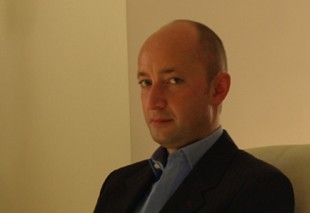

DESIGN SERIES: Martin Wojnowski, DWP

Design Work Portfolio design principal Martin Wojnowski explains how his experience working in hotels is vital for informing the very practical process of hotel design and creating a “living” product.
HME: What role should an interior designer play on a hotel project?
The main role of the commercial interior designer is very commercial. Interior designers should successfully develop an interior design scheme that will bring value to the project and accelerate the financial returns for hotel owner — in line with the operator’s design guidelines. Sometimes these guidelines have to be diplomatically interpreted for the needs of a local market.
The designer identifies key points that will enhance financial returns of a hotel, resort or restaurant and constantly develops design guidelines as a set formula, thus, enriching a brand’s (operator’s) identity. In times of excessive competition within the hospitality and leisure markets, the designer answers the following questions posed by operators and developers: why should somebody stay in my hotel or dine in my restaurant? Why is my outlet different? Who is going to be my preferred guest? Why? Is he really my ideal type of guest? What expectations does my ideal guest have regarding my outlet?
In short, once such questions are answered in agreement with the client and operator, the designer proceeds with the development of an interiors scheme within the best possible budget. Once it is all approved, the designer is set to develop of the scheme and supervise the construction without compromising the overall quality of finishes and FF&E.
HME: How do you meet the demands of clients with reduced budgets without affecting quality?
Each item should be addressed individually and approved by the designer. If it does not meet the set standards, the designer should assist the contractor with selection of a cost effective alternative. It is possible to replace nearly everything these days. However, care should be taken to retain the key finishes. For example, there is a recently constructed, five-star hotel in Dubai which features vinyl flooring in the key reception area. Obviously it was meant to be timber originally. They should have found a cheaper timber or even a laminate option. Otherwise they should have compromised on less significant details or areas. The same applies to furniture. One can never compromise on the quality of a bed/mattress. Otherwise clever alternatives are considered.
There is no ‘golden rule’ for successful design. Clients should be clearly informed regarding the costs from the beginning. If there is a budget issue under the limits of creativity costs, client can just hire the contractors to execute the job including design. However, he should be prepared for disappointments with the final result. A good interior design package matched with exceptional customer service in an operating hotel is the key element of a hotel’s success. Location is a tertiary factor.
HME: What comes first when you are designing a hotel project – practicality or aesthetics?
A successful commercial designer simply knows how to match the practicality with aesthetics. Practicality always comes first in a hotel or resort. Personally, I always develop the circulation of the public spaces and required back of house areas first. I know how the hotel works because I actually worked in restaurants, housekeeping, concierge and front office. It was 20 years ago. I had to earn a living as a student; I never expected this experience would prove to be crucial in my future as a designer. Without the practical, hands-on knowledge of the operating, “living” hotel, I would have never even thought about laying a groundwork for a hotel layout.
Interior design is an awfully practical exercise. It is a lot to do with money and lead times and deadlines etc. Unfortunately design schools do not prepare people for all that — not enough emphasis is put on financial planning. Well, life is the best teacher…
HME: What projects have you worked on in the Middle East?
For the last two years I have been working on the refurbishment of Le Royal Meridien Abu Dhabi and Laguna Tower in Jumeirah Lakes Towers in Dubai. Le Royal Meridien will be the first Starwood property in the region to showcase their new design guidelines for the comming decade. As far as Laguna Tower is concerned, it is a mixed use tower with Moevenpick hotel, serviced apartments and freehold penthouses. It will feature restaurants and a healthclub. In both projects I liaise with all consultants concerned, clients and operators. I believe that both operator and owner will be pleased with final result. The compromises have been achieved.